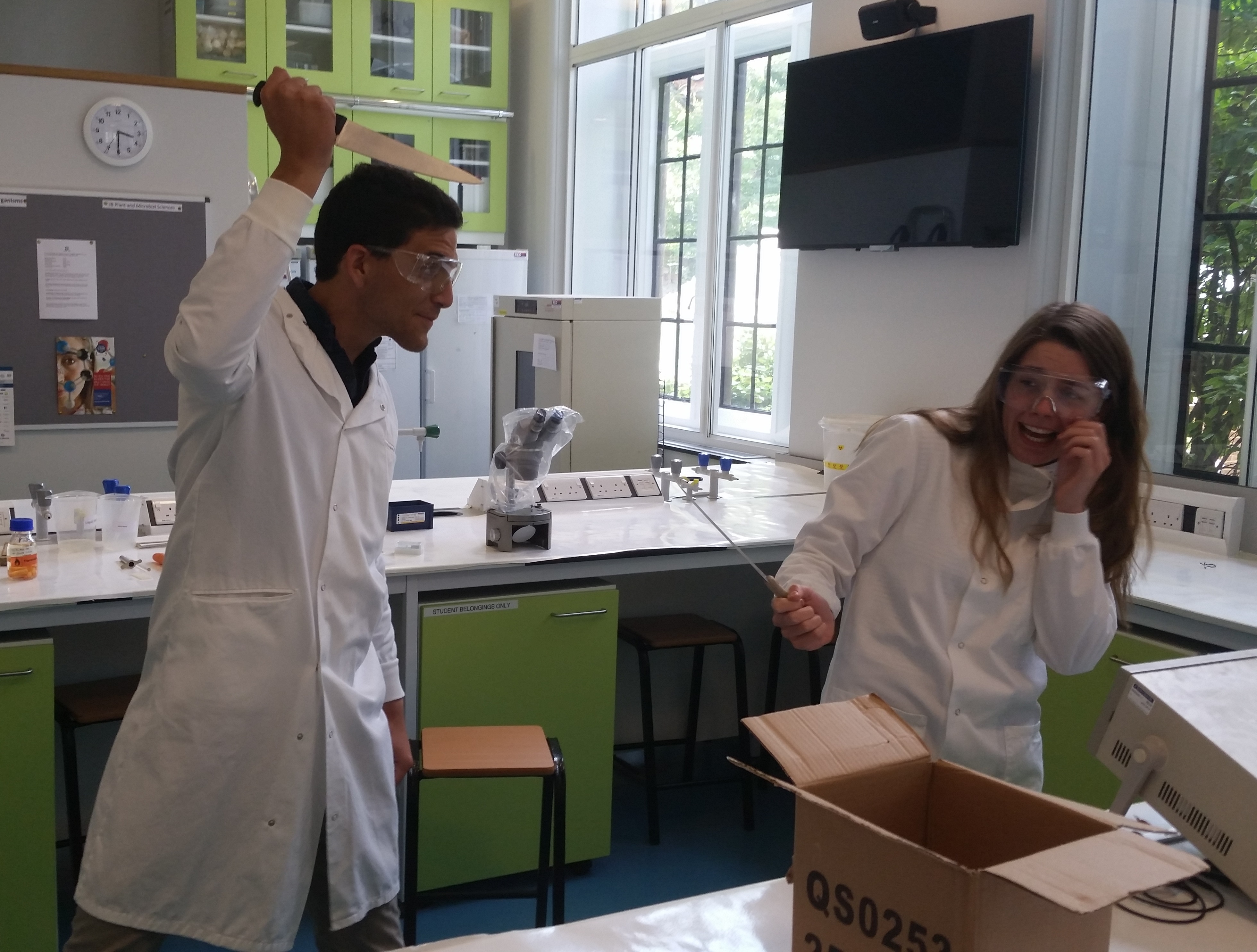Difference between revisions of "Team:Cambridge-JIC/Safety"
K.armfield.1 (Talk | contribs) |
|||
| Line 23: | Line 23: | ||
<p style="font-size: 120%"> | <p style="font-size: 120%"> | ||
A microscope such as the one we have developed has very few safety concerns. Microscopy is a well-established field, dating back hundreds of years, and techniques for it are common practice and ensure safety. Fluorescence microscopy is little different.</p> | A microscope such as the one we have developed has very few safety concerns. Microscopy is a well-established field, dating back hundreds of years, and techniques for it are common practice and ensure safety. Fluorescence microscopy is little different.</p> | ||
| + | <h4>Lighting safety</h4> | ||
<p style="font-size: 120%"> | <p style="font-size: 120%"> | ||
| − | Some fluorescent compounds require UV light in order to excite them to emit radiation. UV light is potentially harmful to the eyes and skin if not used with caution, and should be handled carefully. However, the wavelength of UV light used (395 nm) is well above the wavelength considered most harmful to humans, around 260-270nm [1], and the power of the LEDs used is fairly low. Any UV radiation a user would normally be exposed to while using our microscope would be significantly less intense than that of sunlight, so this was not considered a serious safety issue.</p> | + | Some fluorescent compounds require UV light in order to excite them to emit radiation. UV light is potentially harmful to the eyes and skin if not used with caution, and should be handled carefully. However, the wavelength of UV light used (395 nm) is well above the wavelength considered most harmful to humans, around 260-270nm [1], and the power of the LEDs used is fairly low. Any UV radiation a user would normally be exposed to while using our microscope would be significantly less intense than that of sunlight, so this was not considered a serious safety issue. |
| + | All the lights in the final design of OpenScope are contained within the epi-cube, so no direct light from them will reach the user.</p> | ||
| + | <h4>Biosafety</h4> | ||
<p style="font-size: 120%"> | <p style="font-size: 120%"> | ||
The biological side of the project involved fairly standard, routine transformations with fluorescent proteins in order to test our equipment. <i>Marchantia</i>, the transformed plant we imaged, is a common weed which poses no threat to humans. Its transformation merely led it to express RFP, which does not make the plant harmful to humans or the ecosystem. The vector used to transform the plant, <i>Agrobacterium</i>, is an agricultural pest which inserts plasmids into plant cells and usually does not cause any harm in humans. Transforming it to insert RFP plasmids did not make it any more dangerous or competitive in the environment. | The biological side of the project involved fairly standard, routine transformations with fluorescent proteins in order to test our equipment. <i>Marchantia</i>, the transformed plant we imaged, is a common weed which poses no threat to humans. Its transformation merely led it to express RFP, which does not make the plant harmful to humans or the ecosystem. The vector used to transform the plant, <i>Agrobacterium</i>, is an agricultural pest which inserts plasmids into plant cells and usually does not cause any harm in humans. Transforming it to insert RFP plasmids did not make it any more dangerous or competitive in the environment. | ||
| Line 54: | Line 57: | ||
</center> | </center> | ||
<br> | <br> | ||
| − | + | <h4>Electrical safety</h4> | |
| + | <p style="font-size: 120%"> | ||
| + | OpenScope uses electric light and it is computer-controlled, which involves the use of electricity in our microscope. All electricity used to run OpenScope was 12V DC or lower, which is a safe voltage. Anyone who builds one will need to do some wiring, but all instructions are clear and designed to minimise risk. | ||
| + | </p> | ||
| + | <p style="font-size: 120%"> | ||
The nature of our project makes it inherently impossible for anyone, even with malicious intentions, to use it to harm others or the environment. | The nature of our project makes it inherently impossible for anyone, even with malicious intentions, to use it to harm others or the environment. | ||
</p> | </p> | ||
| Line 75: | Line 82: | ||
<p style="font-size: 120%"> | <p style="font-size: 120%"> | ||
All standard laboratory procedures were followed at all times. Lab coats were worn at all times while doing any wet work and all equipment was cleaned before leaving the lab. The hazard level of any waste was evaluated before disposing of it appropriately. Of course, all relevant laws and regulations regarding biosafety were followed and were generally part of our normal lab procedures. | All standard laboratory procedures were followed at all times. Lab coats were worn at all times while doing any wet work and all equipment was cleaned before leaving the lab. The hazard level of any waste was evaluated before disposing of it appropriately. Of course, all relevant laws and regulations regarding biosafety were followed and were generally part of our normal lab procedures. | ||
| + | </p> | ||
| + | <h5>Outreach day</h5> | ||
| + | <p style="font-size: 120%"> | ||
| + | We hosted an outreach day on the 11th of September for visiting secondary students from a range of schools throughout the UK. Risk assessments were completed and all the students were supervised at all times. | ||
</p> | </p> | ||
<br> | <br> | ||
Revision as of 12:16, 9 September 2015










